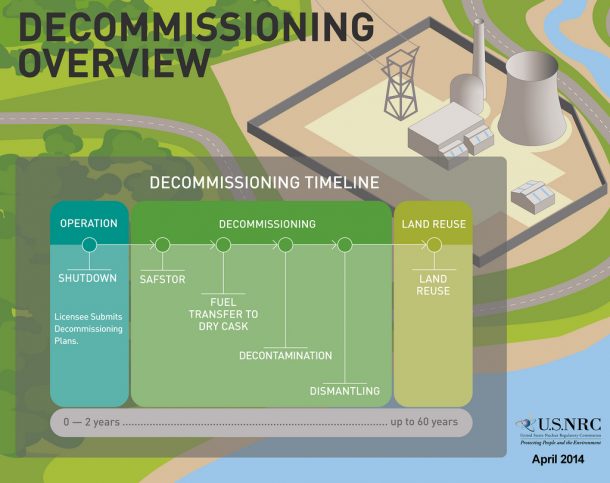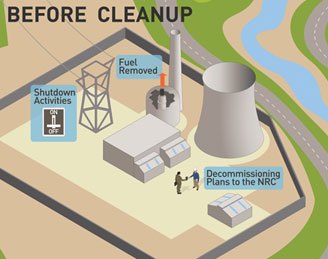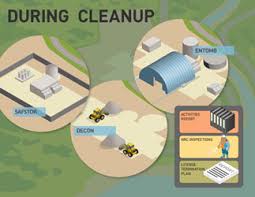A nuclear power plant contains a huge amount of fuel and tons of radioactive uranium in it. All the basic items used in the production are highly radioactive and if not handled with care it can cause severe damage too. Before moving a plant, the workers need to transfer all the fuel assemblies holding tons of radioactive material to 17-foot tall stainless steel containers. The material sits inside this cooling pool for many years and is cooled down to almost 68 degrees Fahrenheit. After the temperature is reached, the workers can then move them to the storage.

After the fuel cools down, the workers move the canisters and fit it into 20-foot deep concrete casks which are embedded in the ground. The fuel’s radiation is trapped inside the concrete while the vents circulate the air to keep it cool. The casks are monitored and guarded all the time. They are strong enough to withstand earthquakes, tsunamis and the impact of a jet crash as well.

Highly contaminated equipment is cut off using remotely controlled tools, which is less than 0.04% of the debris. Other most tainted waste is removed by robotic machines. After that, the workers take over manually and rip apart the building using hydraulic hammers, saws, and bulldozers. The office material used is also thrown in the junk and not used again.

The demolition of building produces more than 25 million cubic feet of debris which consists of rebar, concrete, and piping. All this junk is enough to fill a college-football stadium.

Freight cars carry the debris which is low-level radioactive and is packed in drums, bags, and large size containers. Workers check and document the radiation levels of the debris and then bury the stuff from 8 feet below grade to 38 feet above grade in sedimentary rock and cover it with clay and rock.
This is not something an average person does in his/her day. However, its good to have a certain amount of information about this so that the next time you see a rail car carrying some unknown debris in it, you can tell what is being carried in it.


